Design and Performance Evaluation of an Electro-Hydraulic Camless Engine Valve Actuator for Future Vehicle Applications
Abstract
:1. Introduction
- EH-CEVA’s dynamic characteristic sensitive to oil temperature, and
- Noise and vibration during valve close
- A prototype hydraulic actuator was developed for application to camless engines.
- This paper defined the main design parameters significantly affecting the operating characteristics of EH-CEVA and developed the AMESim simulation model to finally determine the design parameter values.
- To ensure durability of EH-CEVA, a hydraulic snubber design was proposed to minimize the impact force when the valve is closing, and its effects were verified through simulation study based on AMESim and experiments on the test bed.
2. Design and Dynamic Simulation of an EH-CEVA
2.1. Mechanical System Design
2.2. Dynamic Simulations Through AMESim-MATLAB//Simulink Co-Simulation
3. Experimental Verification
3.1. Experimental Setup
- Hydraulic power unit,
- Developed EH-CEVA,
- Displacement sensor, and
- dSPACE/Micro AutoBox1401 PCI board
3.2. Experimental Results
4. Conclusions
Acknowledgments
Author Contributions
Conflicts of Interest
References
- Heywood, J.B. Engine Types and Their Operation, Internal Combustion Engine Fundamentals; McGraw-Hill: New York, NY, USA, 1988. [Google Scholar]
- Nagaya, K.; Kobayashi, H.; Koike, K. Valve Timing and Valve Lift Control Mechanism for Engines. Mechatronics 2006, 16, 121–129. [Google Scholar] [CrossRef]
- Kim, D.; Anderson, M.; Tsao, T.; Levin, M. A Dynamic Model of a Springless Electrohydraulic Camless Valvetrain System; SAE paper 970248; Society of Automotive Engineers: New York, NY, USA, 1997. [Google Scholar]
- Battistoni, M.; Foschini, L.; Postrioti, L.; Cristiani, M. Development of an Electro-Hydraulic Camless VVA System; SAE Technical Paper 2007-24-0088; Society of Automotive Engineers: New York, NY, USA, 2007. [Google Scholar]
- Allen, J.; Law, D. Production Electro-Hydraulic Variable Valve-Train for a New Generation of I.C Engines; SAE Technical Paper 2002-01-1109; Society of Automotive Engineers: New York, NY, USA, 2002. [Google Scholar]
- Mercorelli, P.; Werner, N. Integrating a Piezoelectric Actuator with Mechanical and Hydraulic Devices to Control Camless Engines. Mech. Syst. Signal Process. 2016, 78, 55–70. [Google Scholar] [CrossRef]
- Venkatesh, D.; Selvakumar, A. A Novel Design of Pneumatic Actuator for Camless Engines; SAE Technical Paper 2016-01-0099; Society of Automotive Engineers: New York, NY, USA, 2016. [Google Scholar] [CrossRef]
- Gillella, P.K.; Song, X.; Sun, Z. Time-Varying Internal Model-Based Control of a Camless Engine Valve Actuation System. IEEE Trans. Control Syst. Technol. 2014, 22, 1498–1510. [Google Scholar] [CrossRef]
- Montanari, M.; Ronchi, F.; Rossi, C.; Tonielli, A. Control of a Camless Engine Electromechanical Actuator: Position Reconstruction and Dynamic Performance Analysis. IEEE Trans. Ind. Electron. 2004, 51, 299–311. [Google Scholar] [CrossRef]
- Mercorelli, P.; Werner, N. An Adaptive Resonance Regulator Design for Motion Control of Intake Valves in Camless Engine Systems. IEEE Trans. Ind. Electron. 2017, 64, 3413–3422. [Google Scholar] [CrossRef]
- Zhu, G.G.; Ma, J.; Schock, H. An Iterative Algorithm for Model-based Predictive Control of an Electro-Pneumatic Valve Actuator. In Proceedings of the 2009 American Control Conference, St. Louis, MO, USA, 10–12 June 2009; pp. 2684–2689. [Google Scholar]
- Ma, J.; Zhu, G.G.; Schock, H. Adaptive Control of a Pneumatic Valve Actuator for an Internal Combustion Engine. IEEE Trans. Control Syst. Technol. 2011, 19, 730–743. [Google Scholar] [CrossRef]
- Yoon, Y.; Sun, Z. Robust Motion Control for Tracking Time-Varying Reference Signals and Its Application to a Camless Engine Valve Actuator. IEEE Trans. Ind. Electron. 2016, 63, 5724–5732. [Google Scholar] [CrossRef]
- Mercorelli, P. An Antisaturating Adaptive Preaction and a Slide Surface to Achieve Soft Landing Control for Electromagnetic Actuators. IEEE/ASME Trans. Mechatron. 2012, 17, 76–85. [Google Scholar] [CrossRef]
- Ma, J.; Stuecken, T.; Schock, H.; Zhu, G.; Winkelman, J. Model Reference Adaptive Control of a Pneumatic Valve Actuator for Infinitely Variable Valve Timing and Lift; SAE Technical Paper 2007-01-1297; Society of Automotive Engineers: New York, NY, USA, 2007. [Google Scholar]
- Mercorelli, P. A Two-Stage Augmented Extended Kalman Filter as an Observer for Sensorless Valve Control in Camless Internal Combustion Engines. IEEE Trans. Ind. Electron. 2012, 59, 4236–4247. [Google Scholar] [CrossRef]
- Mercorelli, P. A Two-Stage Sliding-Mode High-Gain Observer to Reduce Uncertainties and Disturbances Effects for Sensorless Control in Automotive Applications. IEEE Trans. Ind. Electron. 2015, 62, 5929–5940. [Google Scholar] [CrossRef]
- Mercorelli, P. A Motion-Sensorless Control for Intake Valves in Combustion Engines. IEEE Trans. Ind. Electron. 2017, 64, 3402–3412. [Google Scholar] [CrossRef]
- Fan, X.Y.; Liu, L.; Chang, S.Q.; Xu, J.T.; Dai, J.G. Electromagnetic Valve Train for Gasoline Engine Exhaust System. Int. J. Automot. Technol. 2016, 17, 361–367. [Google Scholar]
- Nam, K.; Choi, S.B. Development of a Camless Engine Valve Actuator System for Robust Engine Valve Timing Control. Int. J. Veh. Syst. Model. Test. 2012, 7, 372–389. [Google Scholar] [CrossRef]
- Akers, A.; Gassman, M.; Smith, R.B. Hydraulic Power System Analysis; Taylor & Francis: Florida, FL, USA, 2006. [Google Scholar]
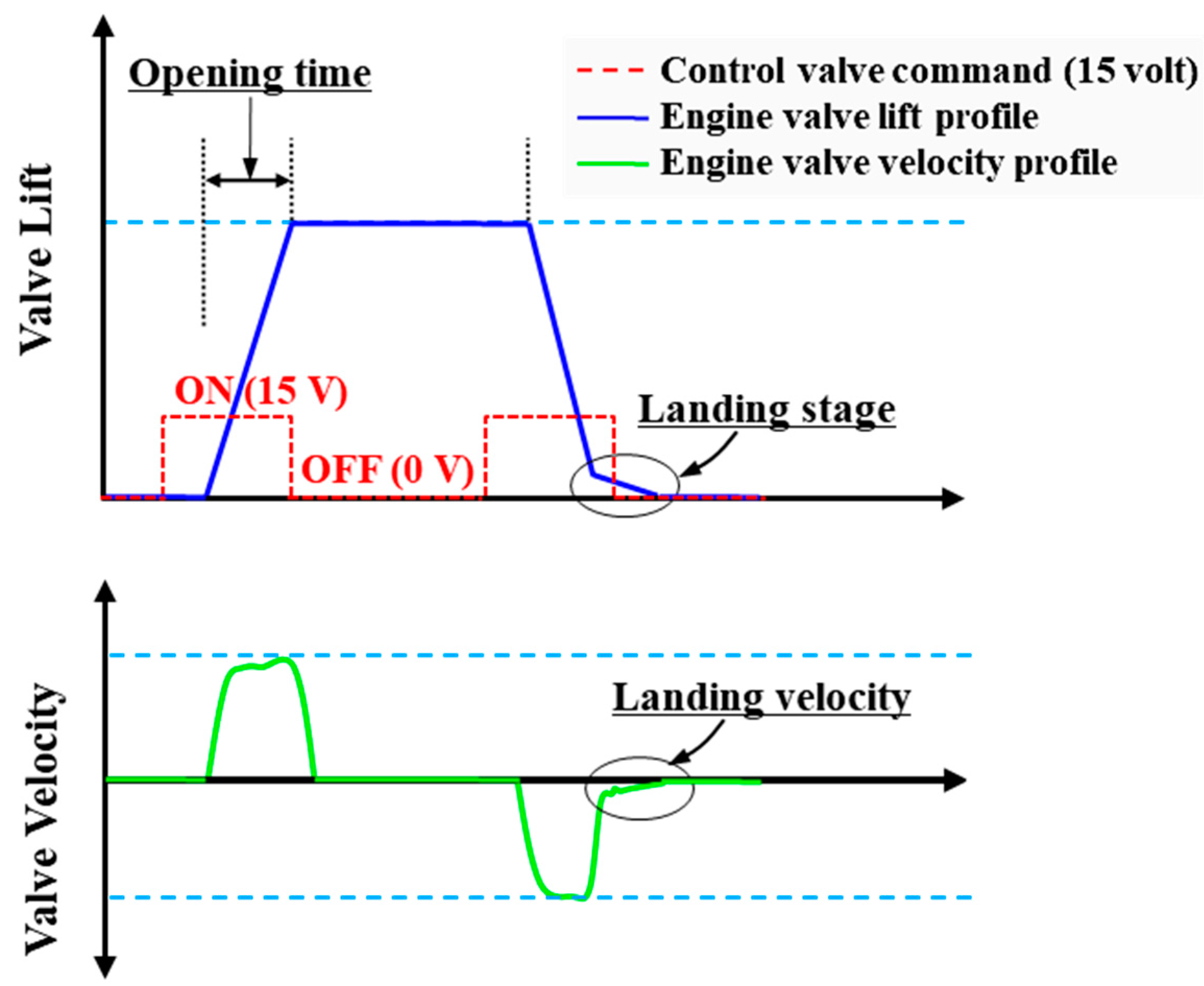
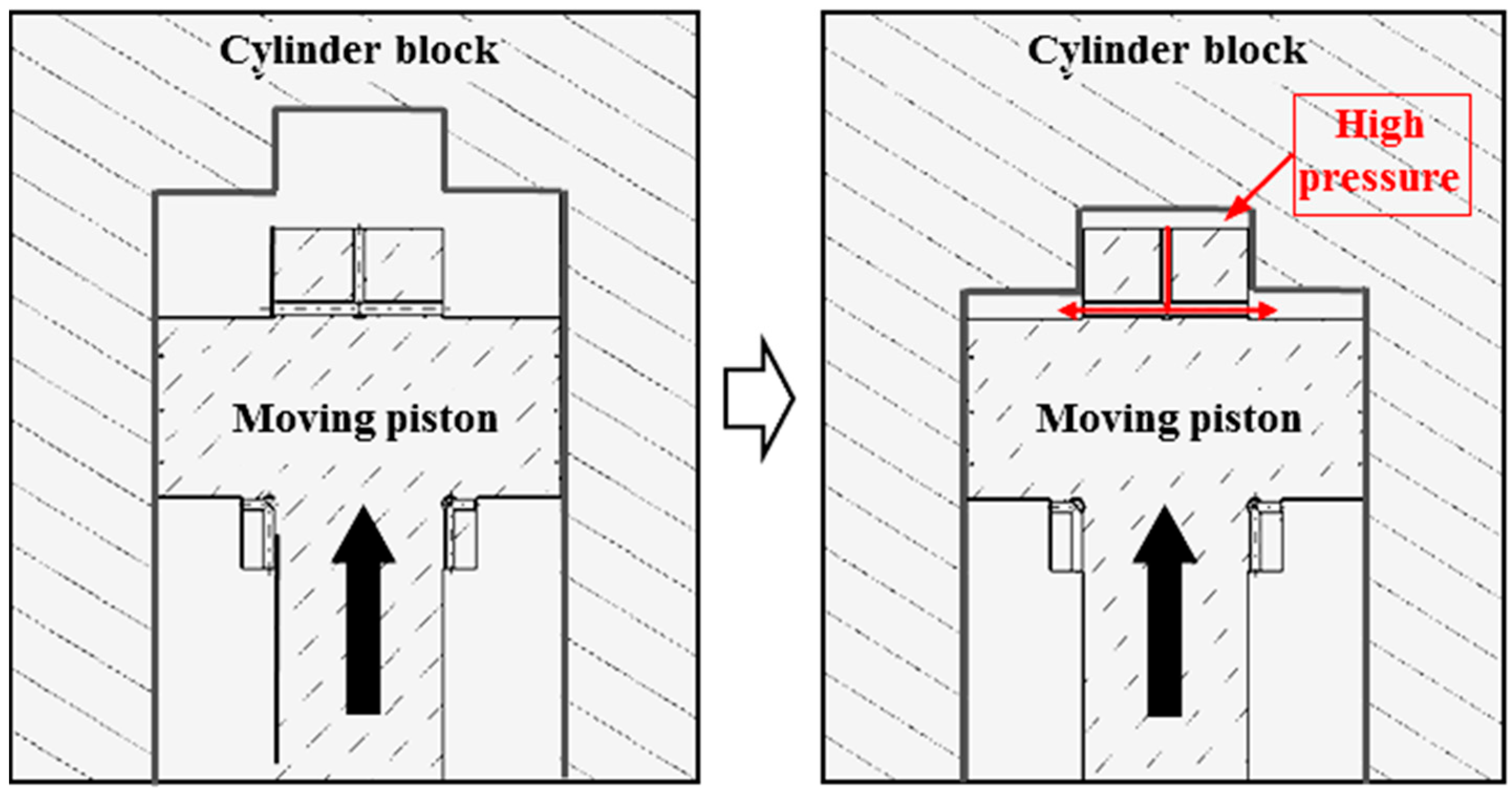
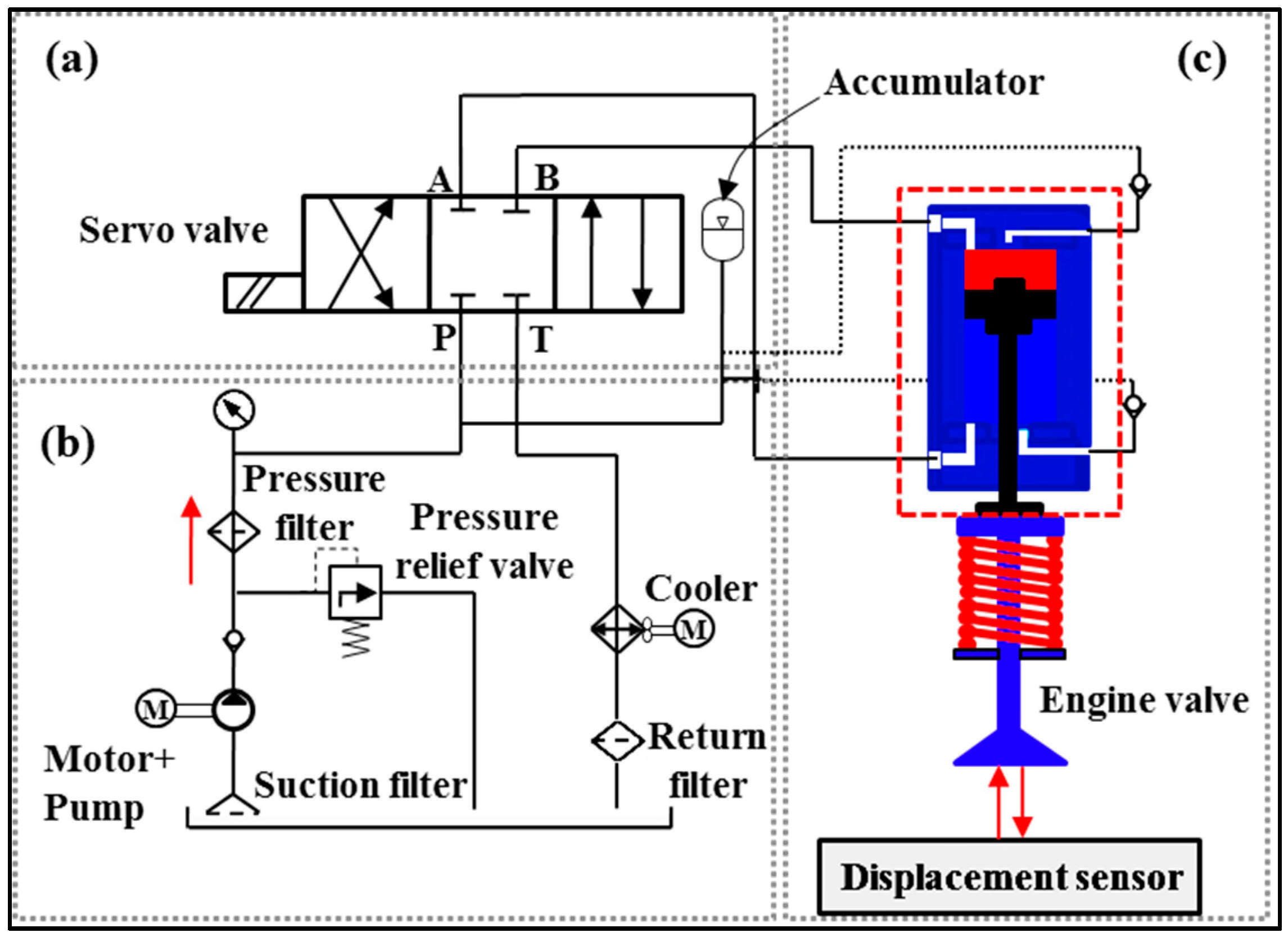
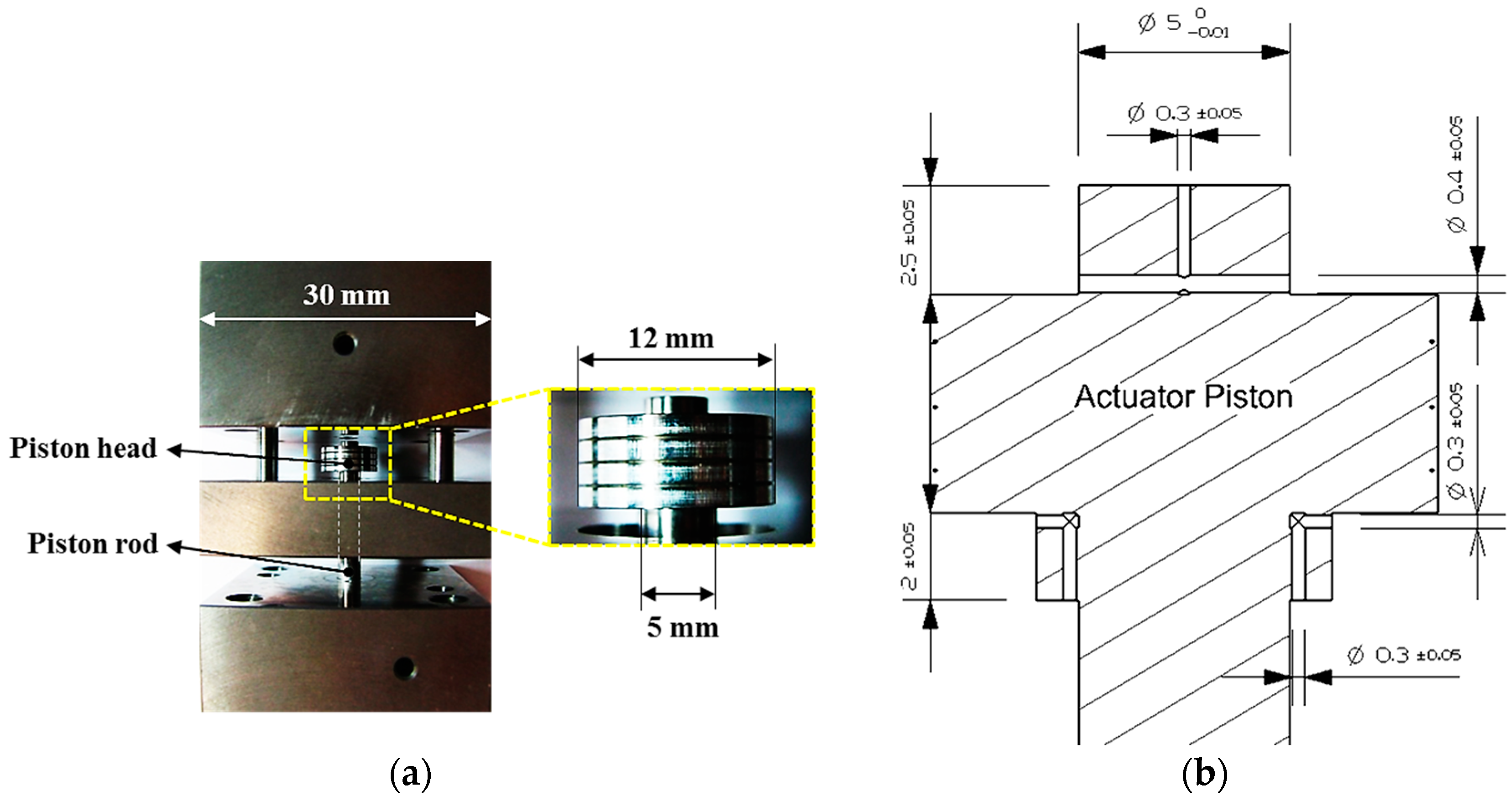
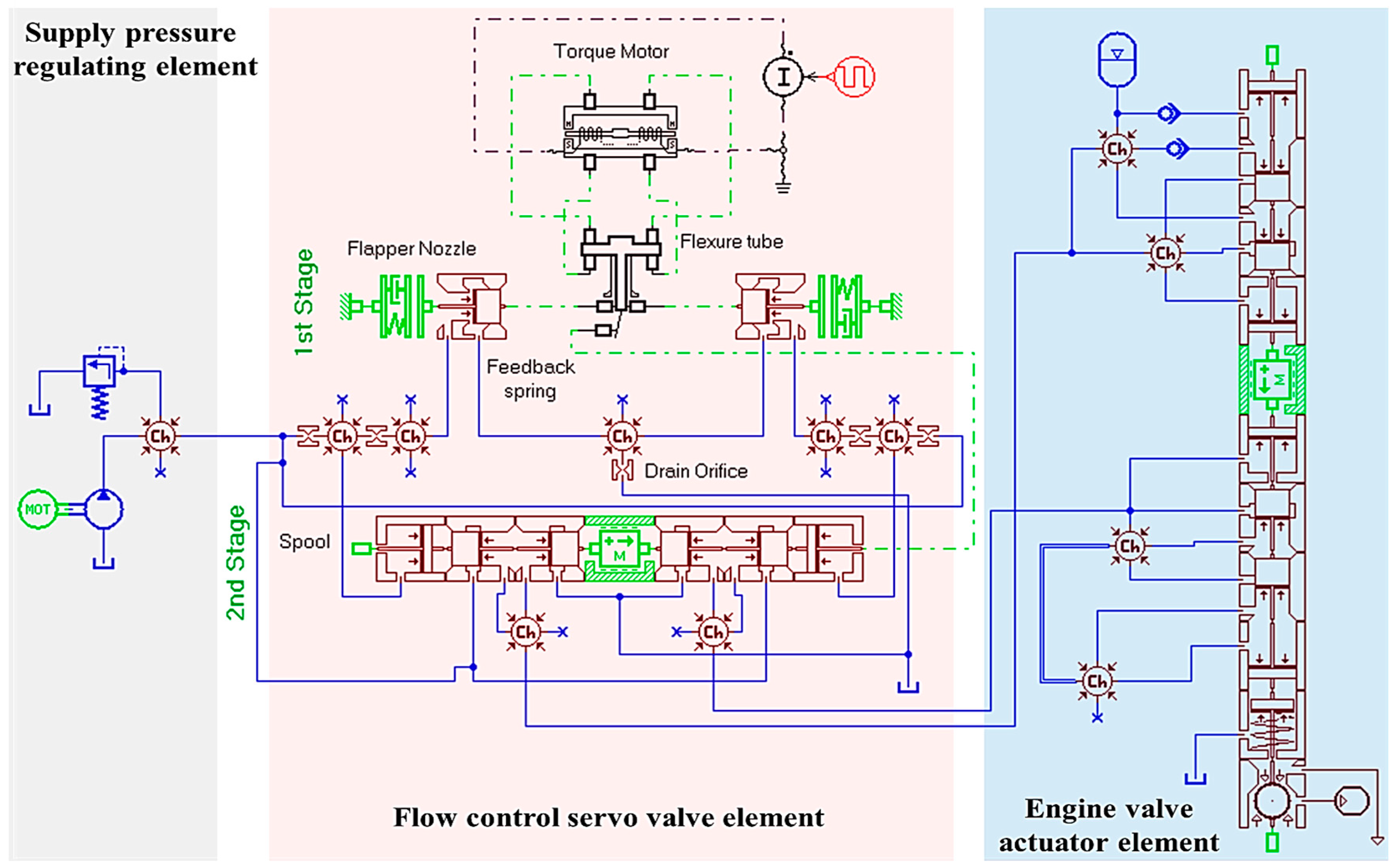
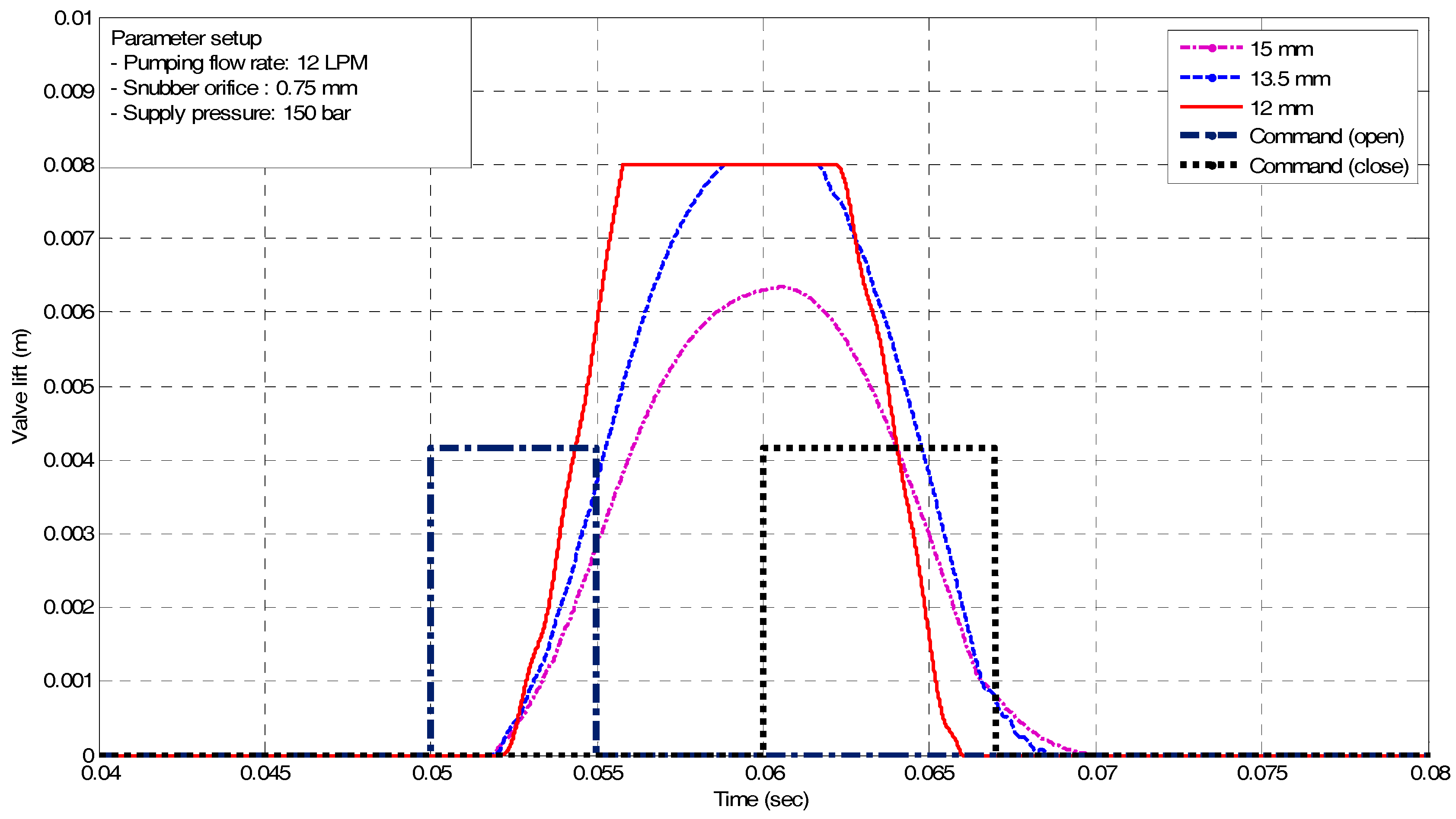
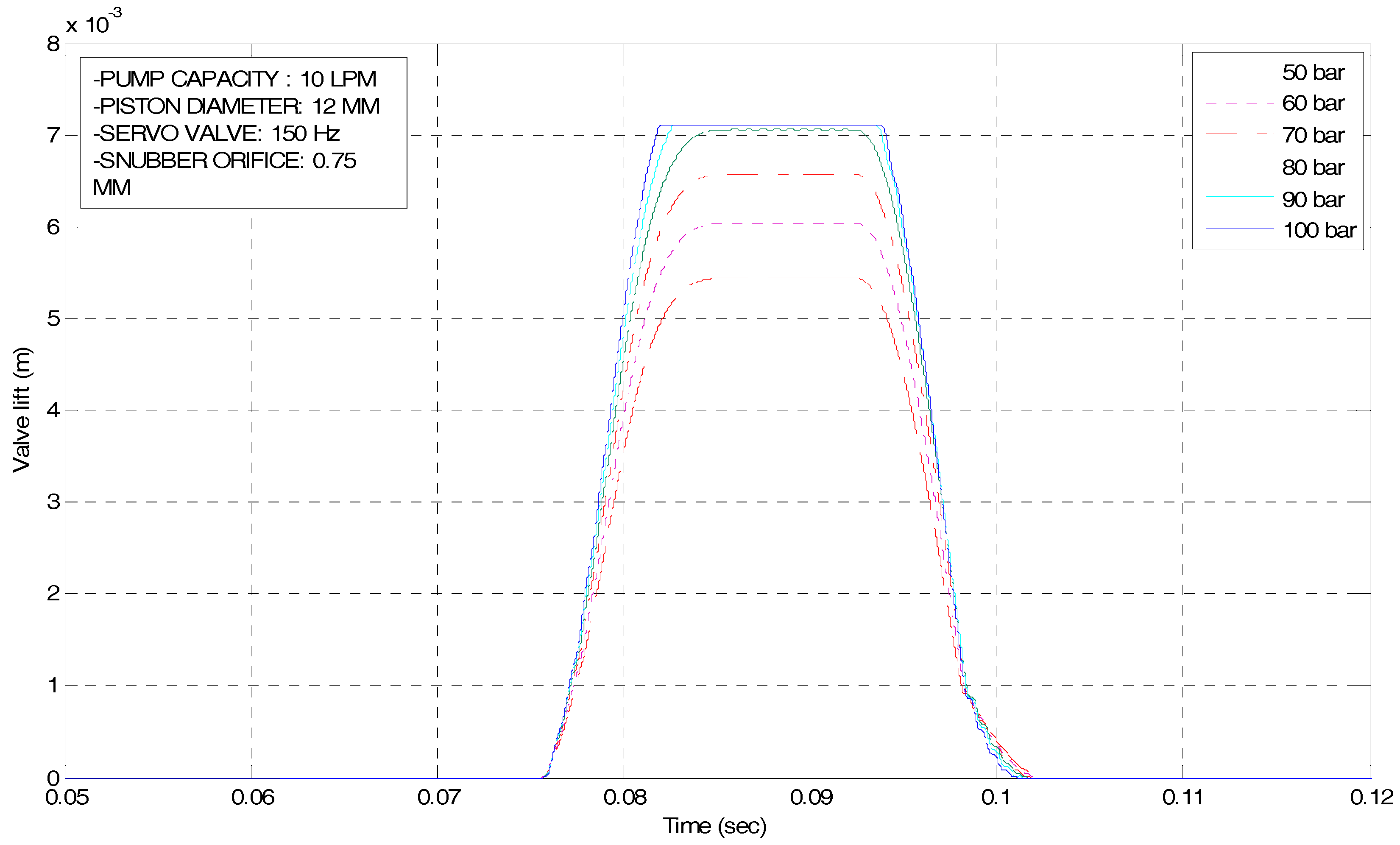
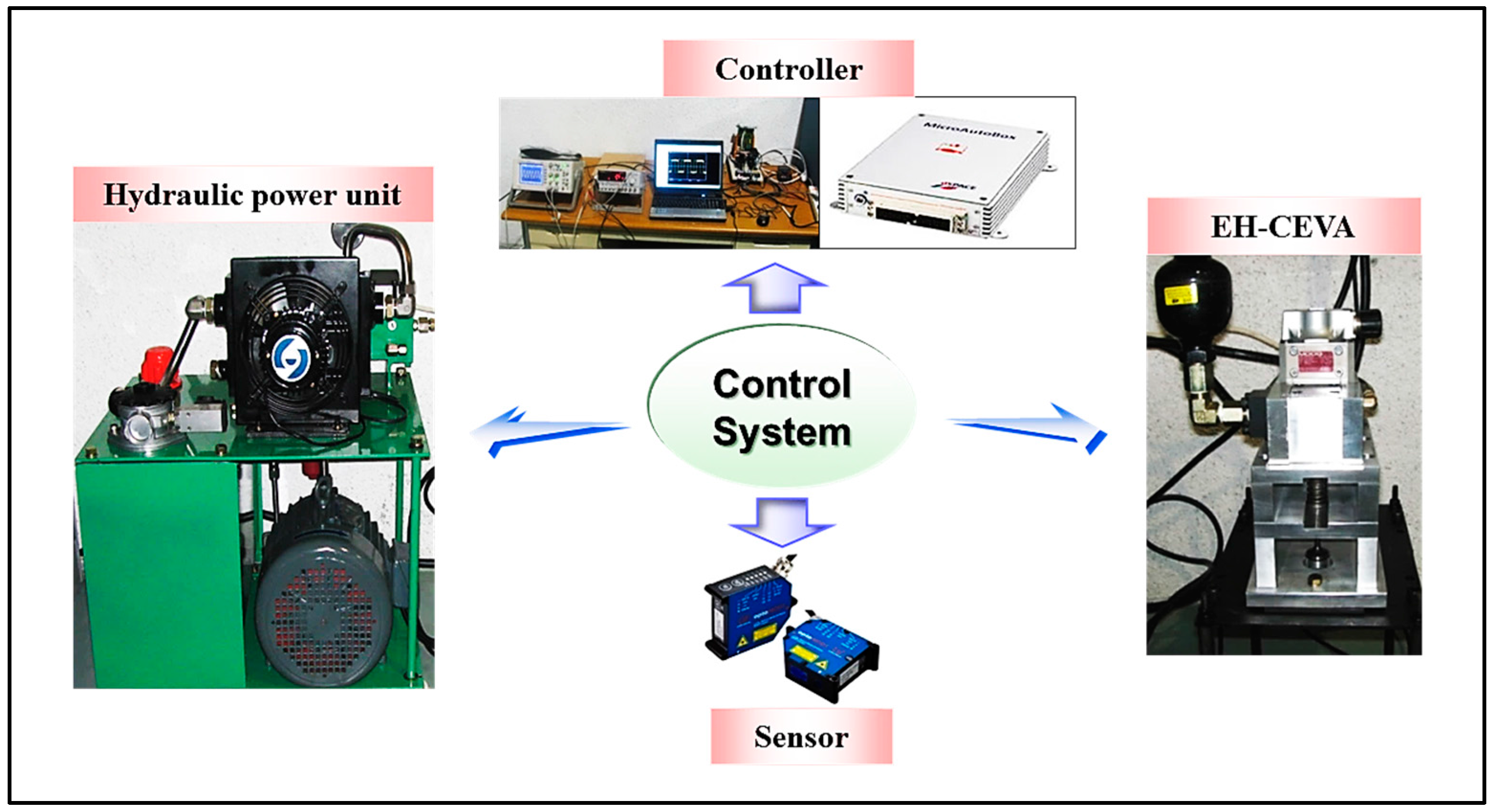
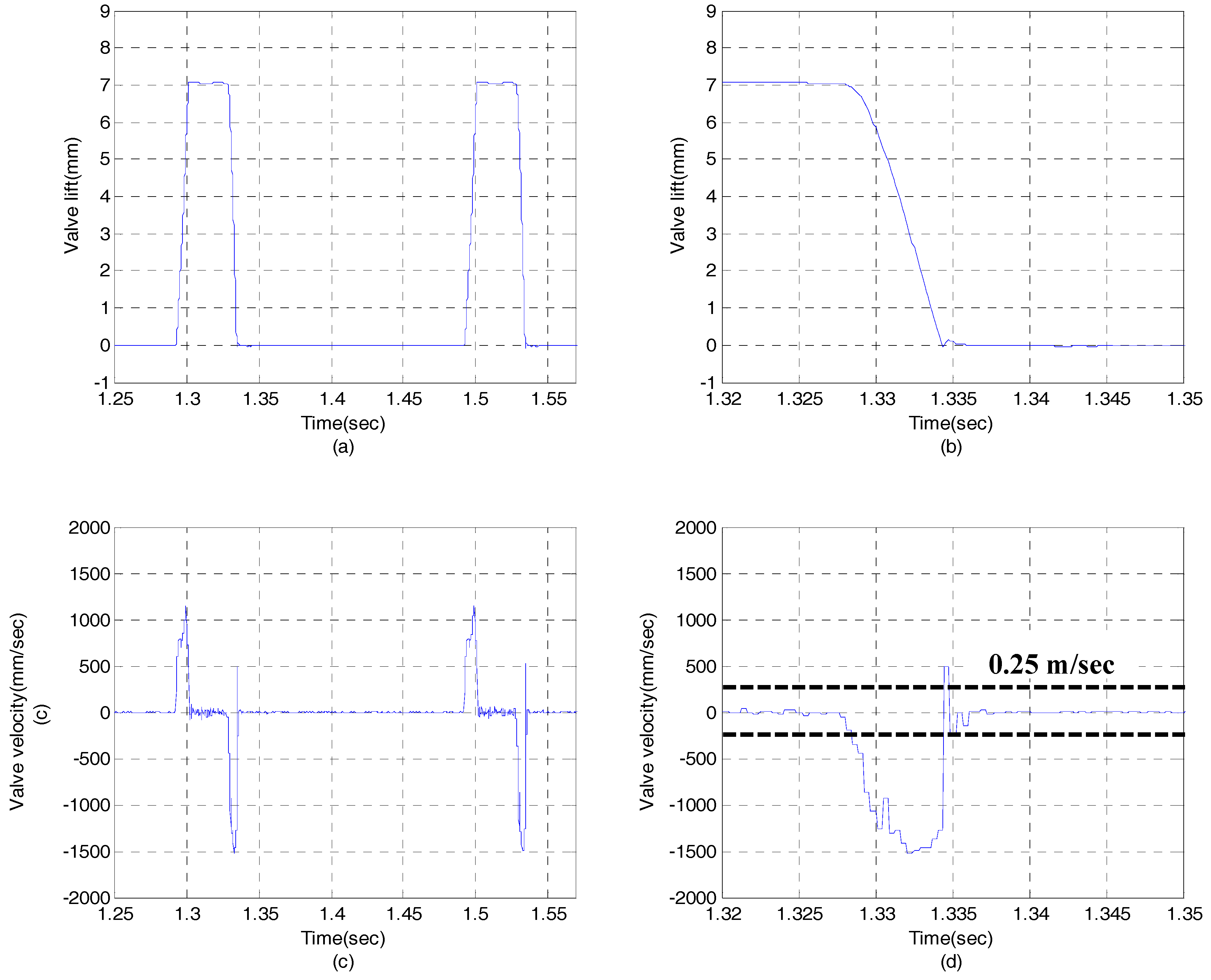

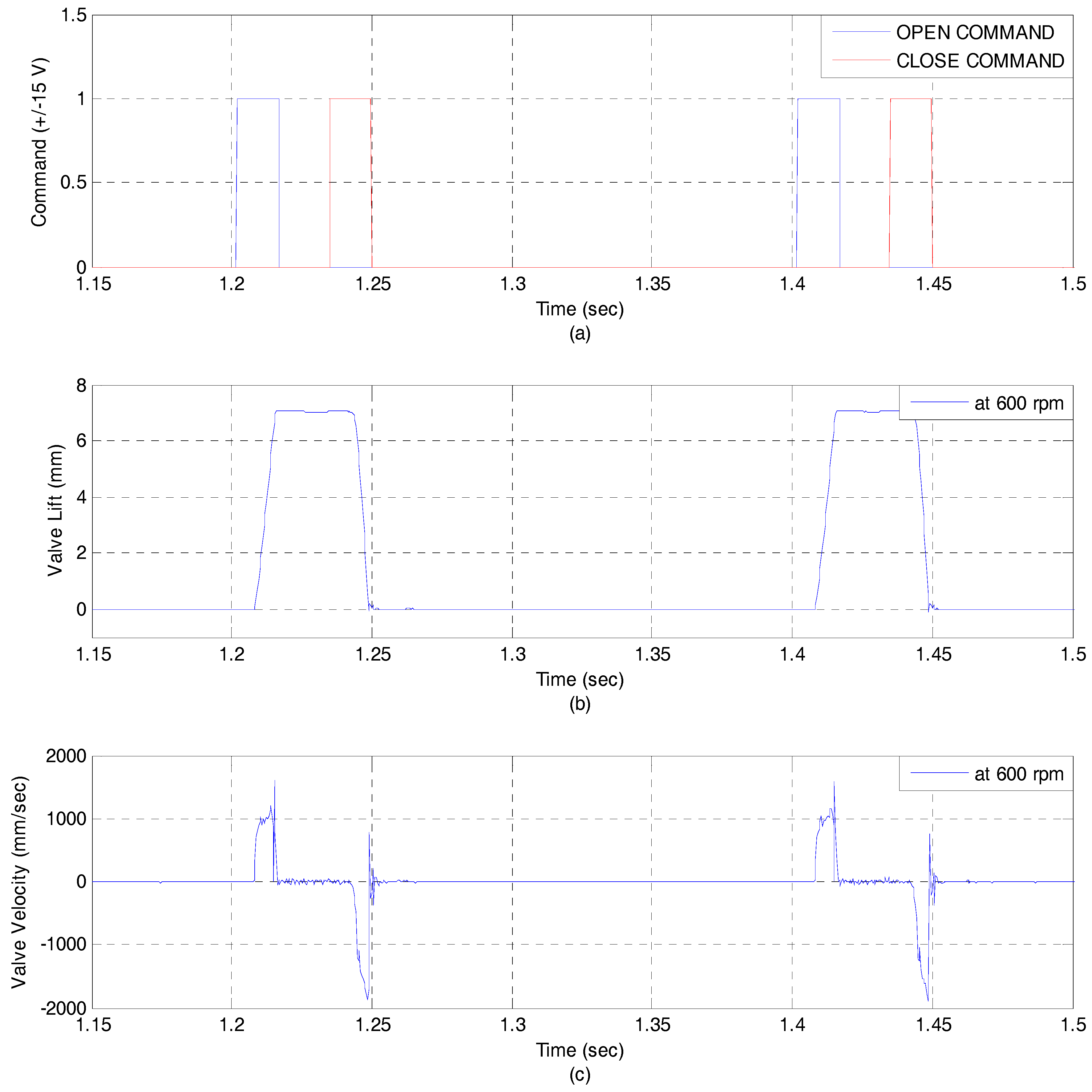
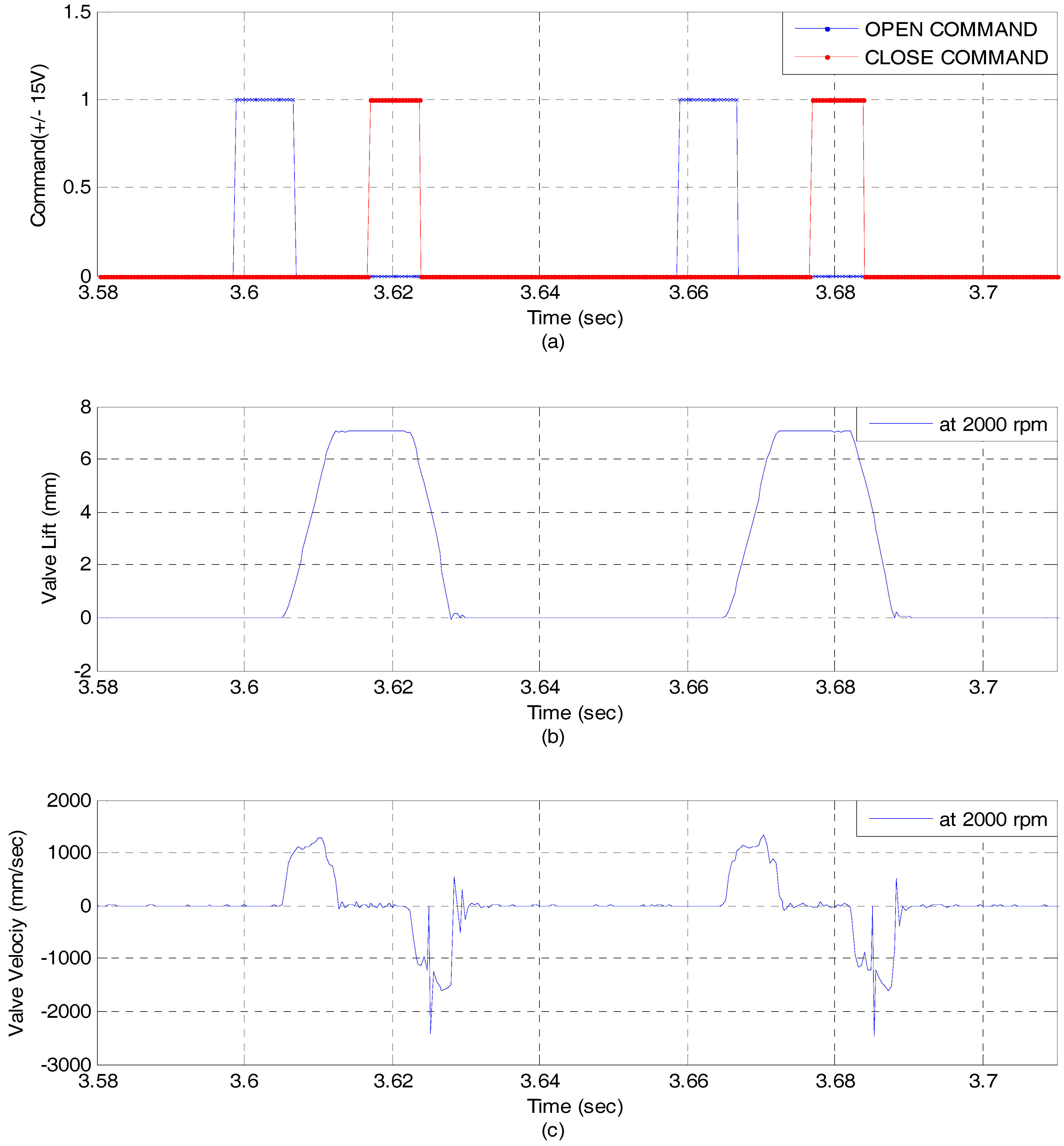
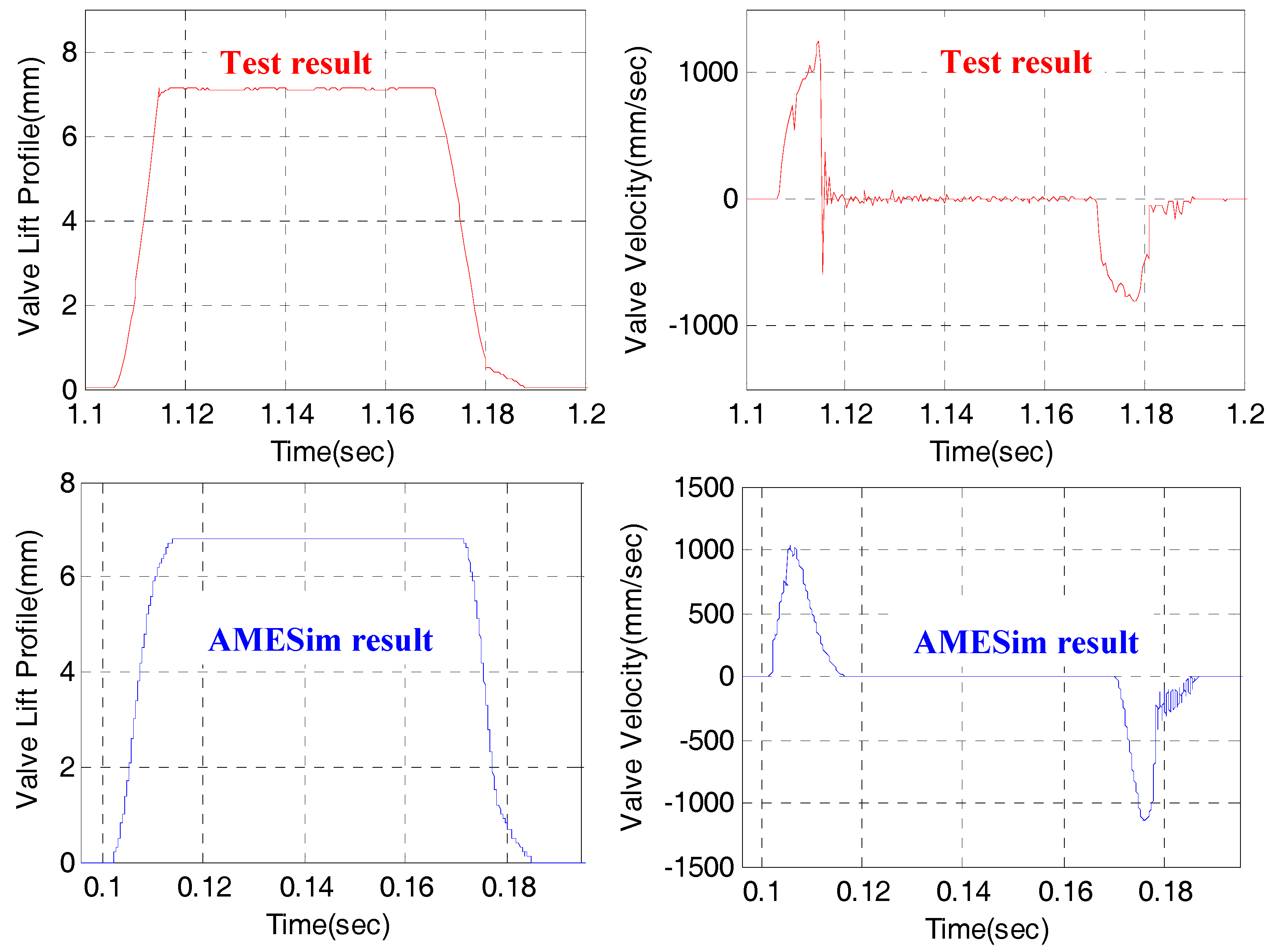
| System Specifications | Target Values |
|---|---|
| Engine valve lift | 7.099 mm |
| Engine valve diameter | 23 mm |
| Maximum engine speed | 4000 RPM |
| Valve opening time range * | 5 ms~10 ms |
| Valve landing velocity | 0.25 m/s |
| Operating oil temperature | −20 °C to 60 °C |
© 2017 by the authors. Licensee MDPI, Basel, Switzerland. This article is an open access article distributed under the terms and conditions of the Creative Commons Attribution (CC BY) license (http://creativecommons.org/licenses/by/4.0/).
Share and Cite
Nam, K.; Cho, K.; Park, S.-S.; Choi, S.B. Design and Performance Evaluation of an Electro-Hydraulic Camless Engine Valve Actuator for Future Vehicle Applications. Sensors 2017, 17, 2940. https://doi.org/10.3390/s17122940
Nam K, Cho K, Park S-S, Choi SB. Design and Performance Evaluation of an Electro-Hydraulic Camless Engine Valve Actuator for Future Vehicle Applications. Sensors. 2017; 17(12):2940. https://doi.org/10.3390/s17122940
Chicago/Turabian StyleNam, Kanghyun, Kwanghyun Cho, Sang-Shin Park, and Seibum B. Choi. 2017. "Design and Performance Evaluation of an Electro-Hydraulic Camless Engine Valve Actuator for Future Vehicle Applications" Sensors 17, no. 12: 2940. https://doi.org/10.3390/s17122940




